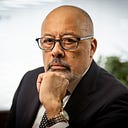The Evolving Role of Employee Resource Groups in Response to Shifting Demographics
In recent decades, Employee Resource Groups (ERGs) or Affinity Groups have been pivotal in championing diversity, equity, and inclusion (DEI) within organizations. Initially, these groups were structured around the social construction theory, focusing on fixed identities such as race, ethnicity, gender, and sexual orientation. However, as demographics change and social identities become more fluid, there’s a pressing need for ERGs to adapt their approaches to better reflect the evolving landscape of American society and the world at large.
The first generation of ERGs was characterized by a narrow focus on singular dimensions of identity. Groups were formed to provide support, networking, and advocacy for specific marginalized communities, such as African American, Asian American, LGBTQ, and women. While these groups played a crucial role in amplifying the voices of underrepresented individuals and driving awareness around issues related to their respective identities, they operated within a somewhat siloed framework that didn’t fully capture the intersectionality of human experience.
As we move forward, there’s a paradigm shift towards a more adaptive approach to ERG requirements and responsibilities. This shift acknowledges the fluid nature of social identities and personal experiences, recognizing that individuals may not neatly fit into predefined categories. Instead of viewing diversity through a single lens, organizations are embracing a holistic perspective that encompasses a multitude of intersecting identities and experiences.
In this new era, ERGs are challenged to expand their focus beyond traditional categories and embrace a more inclusive and intersectional framework. Rather than being confined to representing a single dimension of DEI, ERGs are encouraged to adopt a broader mandate that reflects the diverse tapestry of human identity. This means creating spaces where individuals can explore and celebrate the complexities of their identities, whether it be race, ethnicity, gender, sexual orientation, ability, socio-economic status, or any other aspect of diversity.
The implications of this shift are profound for organizations seeking to construct forward-thinking approaches to ERG development, growth, and maturity. By embracing fluidity and intersectionality, ERGs have the opportunity to foster deeper connections and solidarity among members while also challenging systemic barriers and biases that perpetuate inequality. Moreover, a more expansive view of diversity allows ERGs to address a wider range of issues and concerns, leading to more comprehensive and impactful DEI initiatives.
In conclusion, the evolving role of ERGs reflects a broader societal shift towards embracing diversity in all its forms. By moving away from fixed identities towards a more adaptive and inclusive approach, ERGs are better positioned to respond to the changing demographics of American society and the world at large. As organizations continue to grapple with complex DEI challenges, ERGs will remain vital catalysts for change, driving forward-thinking strategies that promote equity, belonging, and inclusion for all.
Effenus Henderson
